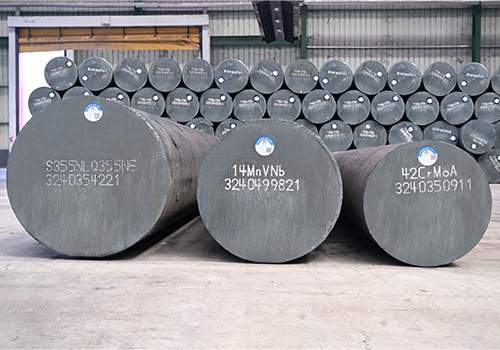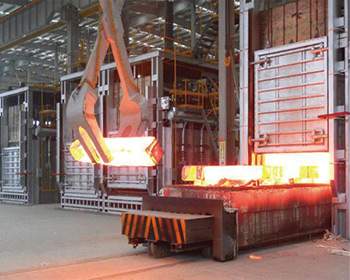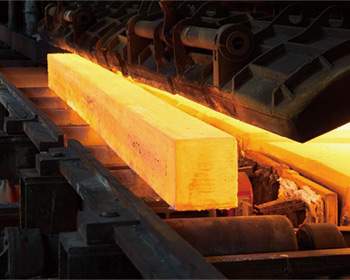
1020 Steel Density: Key Facts You Need to Know
Table of Contents
Introduction

1020 steel is one of the most commonly used low-carbon steels, renowned for its versatility and favorable mechanical properties. Among its defining characteristics, the 1020 steel density plays a crucial role in determining its applications in various industries. Understanding the density and associated properties of 1020 steel can provide valuable insights for engineers, manufacturers, and designers who rely on this material in their projects.
In this comprehensive guide, we will explore the essential facts about the density of 1020 steel, its significance, applications, and how it compares to other materials.
Henan Jiyuan Iron and Steel (Group) Co., Ltd. was founded in 1958. It has rich experience in production and research and development. It provides you with one-stop steel services and welcomes consultations from customers around the world.
What is 1020 Steel?
1020 steel is a low-carbon steel with a carbon content of approximately 0.20%. It belongs to the AISI (American Iron and Steel Institute) classification system and is widely used due to its excellent machinability, weldability, and balance of strength and ductility.
Key properties of 1020 steel include:
- Low carbon content, making it easy to weld and machine.
- Good tensile strength and toughness.
- Versatile applications in manufacturing, construction, and automotive industries.
The 1020 steel density, typically measured in grams per cubic centimeter (g/cm³), is one of its fundamental physical properties that directly affects its performance in various applications.
Why is 1020 Steel Density Important?
The density of a material like 1020 steel determines its weight for a given volume, influencing factors such as:
- Load-bearing capacity in construction and structural applications.
- Transportation and logistics efficiency.
- Material selection for specific industries where weight is a critical factor, such as automotive and aerospace engineering.
Accurate knowledge of 1020 steel density is essential for precise calculations in engineering designs, ensuring safety, efficiency, and cost-effectiveness.
Key Properties of 1020 Steel
Below is a table summarizing the key physical and mechanical properties of 1020 steel, including its density:
| Property | Value | Description |
|---|---|---|
| Density | 7.87 g/cm³ | Determines the material’s weight per volume |
| Carbon Content | 0.18%-0.23% | Low-carbon steel classification |
| Tensile Strength | 394 MPa (57,000 psi) | Resistance to breaking under tension |
| Yield Strength | 294 MPa (43,000 psi) | Stress at which material begins to deform |
| Modulus of Elasticity | 205 GPa (29,700 ksi) | Measure of material stiffness |
| Elongation | 25% | Measure of ductility |
| Hardness (Brinell) | 111 HB | Resistance to indentation and wear |
These properties make 1020 steel a popular choice in applications requiring moderate strength and good machinability.
Applications of 1020 Steel and the Role of Density


Automotive Industry
1020 steel is widely used in the automotive sector for components such as axles, gears, and fasteners. The 1020 steel density ensures optimal weight-to-strength ratios, which are critical for improving vehicle efficiency and performance.
Construction and Structural Engineering
In construction, 1020 steel is used for structural components such as beams, columns, and reinforcement bars. Its density contributes to the stability and load-bearing capacity of these structures.
Manufacturing and Machinery
Due to its excellent machinability, 1020 steel is often used to produce shafts, spindles, and machine components. The density of the material ensures precision in manufacturing and consistent performance in operation.
Industrial Applications
1020 steel is commonly employed in industrial equipment and tools due to its toughness and reliability. Its density is a key factor in ensuring durability and resistance to mechanical stress.
How Does 1020 Steel Density Compare to Other Materials?
Understanding how the density of 1020 steel compares to other materials can provide insights into its suitability for specific applications.
| Material | Density (g/cm³) | Comparison to 1020 Steel |
|---|---|---|
| Aluminum | 2.70 | Much lighter than 1020 steel |
| Stainless Steel | 7.75-8.00 | Slightly denser than 1020 steel |
| Cast Iron | 6.80-7.30 | Slightly less dense than 1020 steel |
| Titanium | 4.51 | Significantly lighter than 1020 steel |
| Copper | 8.96 | Heavier and denser than 1020 steel |
Benefits of Using 1020 Steel

Cost-Effectiveness
1020 steel is widely available and cost-effective, making it an economical choice for various industries. Its density ensures material efficiency and reduces waste.
Versatility
The balance of mechanical properties and density makes 1020 steel suitable for a wide range of applications, from automotive parts to construction materials.
Sustainability
Steel is a recyclable material, and 1020 steel is no exception. Its density facilitates efficient recycling processes, contributing to environmental sustainability.
Conclusion
The 1020 steel density is a vital property that influences its applications across multiple industries. With a density of approximately 7.87 g/cm³, this low-carbon steel provides an excellent balance of strength, machinability, and versatility. Understanding its density and associated properties is crucial for making informed decisions in engineering, manufacturing, and construction projects.
By leveraging the benefits of 1020 steel, industries can achieve optimal performance, cost-efficiency, and sustainability in their operations.
FAQ
What is the density of 1020 steel?
The density of 1020 steel is approximately 7.87 g/cm³.
Why is the density of 1020 steel important?
The density determines the weight of the material for a given volume, influencing its load-bearing capacity, transportation efficiency, and suitability for specific applications.
How does 1020 steel density compare to aluminum?
Aluminum has a density of 2.70 g/cm³, making it much lighter than 1020 steel, which has a density of 7.87 g/cm³.
Can 1020 steel be used for structural applications?
Yes, 1020 steel is commonly used in structural engineering due to its favorable mechanical properties and density.
Is 1020 steel recyclable?
Yes, 1020 steel is recyclable, making it a sustainable material choice for various industries.
How does the density of 1020 steel affect its machinability?
The density of 1020 steel contributes to its stability during machining, ensuring precision and consistent performance.
What industries benefit most from 1020 steel?
Industries such as automotive, construction, manufacturing, and industrial equipment benefit significantly from the properties and density of 1020 steel.
Are there alternatives to 1020 steel with similar density?
Yes, materials like stainless steel and cast iron have comparable densities, but their mechanical properties may vary.






